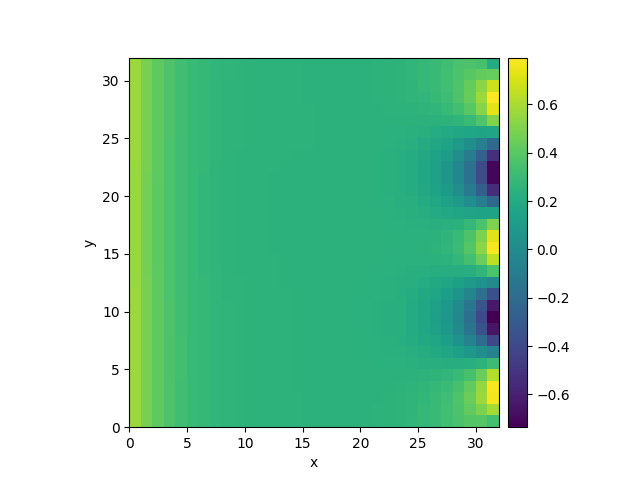Note
Go to the end to download the full example code
2.11 Setting boundary conditions
This example shows how different boundary conditions can be specified.

0%| | 0/10.0 [00:00<?, ?it/s]
Initializing: 0%| | 0/10.0 [00:00<?, ?it/s]
0%| | 0/10.0 [00:05<?, ?it/s]
0%| | 0.005/10.0 [00:05<3:18:07, 1189.32s/it]
0%| | 0.025/10.0 [00:05<39:32, 237.88s/it]
9%|▉ | 0.93/10.0 [00:05<00:58, 6.40s/it]
9%|▉ | 0.93/10.0 [00:05<00:58, 6.42s/it]
100%|██████████| 10.0/10.0 [00:05<00:00, 1.67it/s]
100%|██████████| 10.0/10.0 [00:05<00:00, 1.67it/s]
from pde import DiffusionPDE, ScalarField, UnitGrid
grid = UnitGrid([32, 32], periodic=[False, True]) # generate grid
state = ScalarField.random_uniform(grid, 0.2, 0.3) # generate initial condition
# set boundary conditions `bc` for all axes
bc_x_left = {"derivative": 0.1}
bc_x_right = {"value": "sin(y / 2)"}
bc_x = [bc_x_left, bc_x_right]
bc_y = "periodic"
eq = DiffusionPDE(bc=[bc_x, bc_y])
result = eq.solve(state, t_range=10, dt=0.005)
result.plot()
Total running time of the script: (0 minutes 6.165 seconds)